Yoga can treat the thyroid by balancing your energy, boosting flexibility, and relieving stress. There is a very strong connection between stress and hypothyroidism. Hence, practicing certain yoga poses will underactive or overactive thyroids.
Here are 10 yoga poses that can treat thyroid:
1. Sarvangasana – The Shoulder Stand
The asana is very effective in boosting the body’s immune system, stimulates thyroid glands, and facilitates relieving stress (mental and emotional) while soothing the mind. Sarvangasana balances body and mind. It is an inversion pose and stimulates blood flow to the glands in the upper body. The asana also boosts the efficiency of the thyroid.
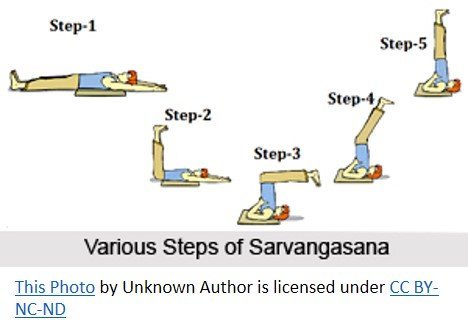
How to Do
Step 1: Lie flat on your back.
Step 2: Loosen up your body.
Step 3: Raise your legs off the mat slowly along with buttocks and spine.
Step 4: Twist elbows and place hands right behind the ribcage for supporting the spine.
Step 5: Keep the legs vertical and together. The arms should offer stability.
Step 6: Inhale and exhale for at least 3 counts before bringing the legs back down.
2. Halasana – The Plough Pose
The pose is very helpful in boosting the overall functioning of the endocrine system. It strengthens back muscles, tones up abdominal glands while relaxing the nervous system, and treat the thyroid. The pose is very helpful in stimulating the thyroid gland.
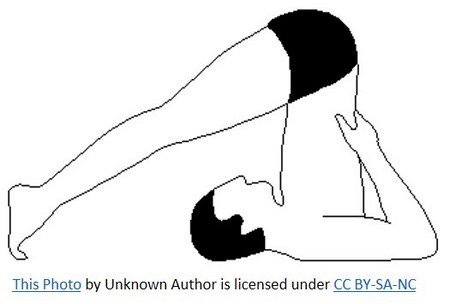
How to Do
Step 1: Lie down on a mat with head, legs, elbows, and palms placed firmly to the floor.
Step 2: Slowly raise your legs until they are opposite to the floor.
Step 3: Touch the floor with your legs behind your head (try).
Step 4: Maintain the position for at least a few minutes. Take deep breaths.

Ayurveda And Thyroid Health Silver
3. Legs-up-the-Wall Pose – Viparita Karani
The restorative inversion pose does not put a lot of pressure on the neck. Since it is a passive asana, it makes for an excellent choice for restoring the body’s balance. The asana will treat the thyroid by relieving stress that can contribute to the imbalance of the thyroid.
How to Do
Step 1: Place a firm pillow underneath your hips for support.
Step 2: Sit keeping your right side against the wall.
Step 3: Lift legs up along the wall while you lie back.
Step 4: The buttocks can be placed right up against the wall or even a few inches away.
Step 5: Relax your throat. Keep arms together with your body, above your head, or in any comfortable position you prefer.
Step 6: Maintain the position for up to 20 minutes.
Step 7: Hold on to this pose for at least 5 minutes.
4. Corpse Pose – Shavasana
The pose offers complete relaxation. It is very effective in unwinding and de-stressing. This is very important for improving the symptoms of thyroid.
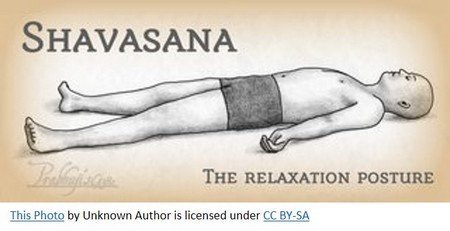
How to Do
Step 1: Rest flat on your back.
Step 2: Keep your legs and arms relaxed. The palms should face the roof.
Step 3: Shift the focus from the body to the breathing.
Step 4: Continue breathing in a natural relaxed way.
Step 5: You need to practice this for up to 25 minutes.
5. Matsyasana – The Fish Pose
This pose is especially beneficial for yoga poses for hypothyroid issues. It ensures ample stretching to the neck region while improving spinal health and increases blood circulation in the thyroid glands.
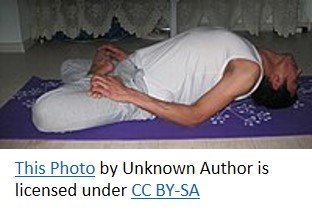
How to Do
Step 1: Sit in Padmasana (cross-legged position).
Step 2: Bend the chest area upwards while in Padmasana.
Step 3: Place hands flat to the ground and give support to body weight using elbows.
Step 4: Maintain this position for a few deep breaths.
6. Cobra Pose – The Bhujangasana Pose
This asana is known for its gentle stimulating effect on the throat to treat thyroid.
How to Do
Step 1: Lie down on the stomach on a yoga mat.
Step 2: Place palms on the mat under shoulders.
Step 3: Squeeze elbows into their sides.
Step 4: Press the palms into the mat and gently lift the head up until the chest lifts off the mat. Your back should reach an arched position.
Step 5: Breathe deeply thrice.
Step 6: Lower chest and head slowly back down to the mat.
7. Setu Bandhasana – The Bridge Pose
This asana is very effective in the spinal area, chest, and neck. It soothes the nervous system and stimulates thyroid glands and abdominal muscles.

How to Do
Step 1: Lie comfortably on a yoga mat. Breathe out and push up. Take your feet off the floor slowly.
Step 2: Maintain neck and head on the mat flat. Keep the rest of the body in the air.
Step 3: Maintain the position for the length of time you can. Return to the starting position.
Step 4: Repeat 3-4 times initially.
8. Ustrasana – The Camel Pose
Since the asana involves a strong neck stretch, it helps to stimulate the thyroid
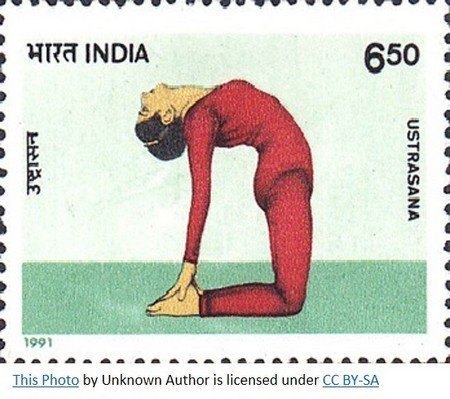 gland. Practicing Ustrasana also increases blood circulation in this region.
gland. Practicing Ustrasana also increases blood circulation in this region.
How to Do
Step 1: Kneel down while placing your heels facing the roof.
Step 2: Keep the chest area straight.
Step 3: Curve in a backward position and proceed towards your toes. Your chest should lie parallel to the floor and legs.
Step 4: Twist in reverse. Hold your heels using your hands.
Step 5: Extend the throat and neck while holding the pose for a minimum of 5 minutes.
9. Balasana – The Child’s Pose
This asana is very helpful in relieving tension in the neck and spine area. It also adds strength to back muscles. It creates a very soothing and calming effect on your mind which is very important for treating thyroid.
How to Do
Step 1: Sit down on your heels keeping hips on the heels.
Step 2: Bring the forehead down to the floor while breathing out deeply.
Step 3: Maintain arms close by your body. Keep hands overhead with palms facing upwards. Loosen up elbows completely.
Step 4: Bring hands at the back close by your thighs. Allow the head to touch the ground.
Step 5: Breath very slowly. Maintain this pose for a few minutes.
Step 6: Return back to the starting position slowly while breathing out.
10. Sirshasana – The Headstand Pose
This asana is known to be one of the best for managing the thyroid gland. Sirshasana acts directly on the thyroid glands while balancing the metabolic functions. It improves wakefulness and alertness sans excessive nervousness. Sirshasana is very helpful in maintaining the thyroid gland in perfect health.
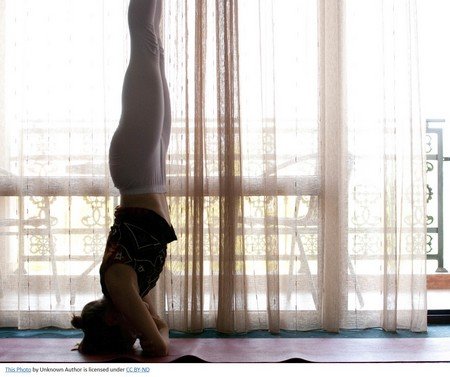
How to Do
Step 1: Interlock fingers together, keep palms open, and place your forearms down. Maintain this position with your arms.
Step 2: Place the top of your head down on the yoga mat.
Step 3: Slowly straighten the legs, coming onto the toes.
Step 4: Push weight into your forearms and shoulders. Focus on using the strong core to lift toes away from the mat. Straighten the legs. Hold for 10-15 breaths.
Step 5: Bend the knees first and bend at the hips, slowly coming back to the mat. Maintain the pose for 5 breaths prior to lifting the head.
The above-mentioned yoga poses can help to treat a thyroid problem
Related post:





